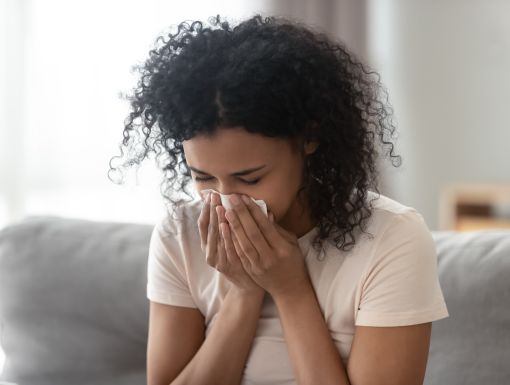
Avoid Christmas Tree Allergy Triggers in the 2024 Holiday Season
You’ve just returned home with your fresh Christmas tree, and the family is excited about getting it set up and decorated for the holidays. But after a day or two, you start sneezing and feeling short of breath. What’s going on?
It’s possible that you have what some people call “Christmas tree syndrome.’’
What is Christmas tree syndrome?
When you think of Christmas trees, you probably think of shiny bulbs, handmade ornaments your first-grader brought home from school, twinkling lights and a shining star atop the tree. But your tree may have other less desirable additions.
The American Academy of Allergy, Asthma and Immunology says that if you’re sneezing and wheezing, it’s unlikely you’re allergic to the Christmas tree itself, but you could be allergic to mold spores lurking in the trees. These microscopic spores can trigger asthma attacks, sneezing or an itchy nose.
A 2007 study showed that airborne mold spores in an apartment increased from 800 spores per cubic meter before a live Christmas tree was brought in to the apartment to 5,000 spores per cubic meter after the tree had been in the apartment for two weeks. Clearly, if you’re allergic to mold, that’s going to be a problem. And if your home has central heat and air, the system can help the mold spores travel throughout the house.
In addition to mold, Christmas trees can harbor weed pollen from plants that grow in the fall, according to another group, the American College of Allergy, Asthma and Immunology. This pollen can trigger asthma and allergy symptoms. Pollen can come from weeds, grasses and trees.
Can people be allergic to the Christmas trees themselves?
Pine tree allergies are possible, but not common. Pine pollen is produced in the spring, so that is an unlikely cause of Christmas tree syndrome in the winter.
Some people have allergic skin reactions, called contact dermatitis, when they touch the sticky resin of a pine tree. If you choose a live Christmas tree, it’s a smart idea to wear long sleeves made of thick material when you set up the tree in your home to avoid contact with your skin as much as possible, especially if you’re prone to these types of skin reactions.
What’s the solution to Christmas tree syndrome?
Opting for an artificial tree, while maybe not as nostalgic or fragrant as a “real tree,” is a good alternative if live Christmas trees leave you with a nose as red as Rudolph’s.
Take care when spraying artificial snow or flocking trees – inhaling particles from the sprays can trigger asthma attacks.
The American Academy of Allergy, Asthma and Immunology says that if you insist on having a real tree, let it dry for a week in your garage or enclosed porch and then shake it thoroughly before bringing it inside. Try using a leaf blower on the tree outside to help rid it of unwelcome particles.
You can try running a high-performance air purifier in the same room as the Christmas tree to keep mold spores in check.
Be aware that even artificial trees can collect mold and dust if not stored properly at the end of Christmas season.
If you are concerned that you may have allergies to mold, pine trees or other allergens, talk to your healthcare provider.
Learn more about Alegra Grieb, MD



